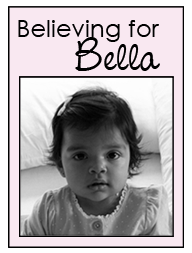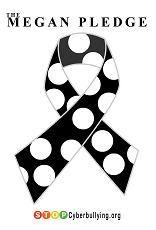
As an art historian, part of what I am studying and analyzing is how people communicate. You have an idea (or your patron has an idea) and it must be communicated. How will you acheive this? What will need to be shown? How much of that message should be overt, and how much covert? What images and techniques will be used to convey meaning?
One thing I have notived is that when communicating a new idea to a culture, it is often communicated using images and ideas the culture is already familiar with to get the new idea across. For example, in early Christian art, much of the early imagery is taken from pre-Christian art. These images had meaning for early Christians because before they were Christians, they had been non-Christians; their culrue had been non-Christian.

Images of Apollo, with the connotations of light, power, and protection made excellent early Christ figures. The bearded Zeus, with the connotations of kingship, power, and maturity became a later favorite, particularly the image of Zeus at Olympia, where he sits enthroned (the image of Lincoln at teh Lincoln Memorial is also based on the Olympia Zeus). The Good Shepherd, with its roots in images of sacrificers and devotees combined with teh idea of the shepherd who protects his flock was another great favorite (usually in the youthful Apollo guise). Early Christians quickly and clearly got the idea of who Christ was and what Christianity was about by viewing these images.
 This is a useful strategy for speaking to people about things they don't understand: put it into terms and ideas that they do understand, and go from there. Images and words are metaphors and analogies; re-presentations of ideas and experiences that another person may not have. How close can you come to the original, when the original is beyond reach of the viewer?
This is a useful strategy for speaking to people about things they don't understand: put it into terms and ideas that they do understand, and go from there. Images and words are metaphors and analogies; re-presentations of ideas and experiences that another person may not have. How close can you come to the original, when the original is beyond reach of the viewer?  From this idea, we get the use of rainbow spectrums for autism. Puzzle peices. Trips to Holland. Are these analogies, symbols, metaphors good ones, or not? It depends on how they are used, really; but no analogy is perfect, and some of them are downright off-base; but can they still be used to communicate? I don't care for the way the puzzle peice has been used, but it is very useful in starting a conversation about autism, because it is so recognizable. The spectrum thing, taken from the diagnosis "Autism Spectrum Disorder" has its usefulness, but also its difficulties. Even the trip to Holland has its problems as an analogy, but when trying to explain the experience of parenting to a clueless person with no special needs kids, it can be really useful. Trying to explain parenting generally? Probably not. The image has its limitations, and those must be recognized; but don't toss the baby with the bathwater.
From this idea, we get the use of rainbow spectrums for autism. Puzzle peices. Trips to Holland. Are these analogies, symbols, metaphors good ones, or not? It depends on how they are used, really; but no analogy is perfect, and some of them are downright off-base; but can they still be used to communicate? I don't care for the way the puzzle peice has been used, but it is very useful in starting a conversation about autism, because it is so recognizable. The spectrum thing, taken from the diagnosis "Autism Spectrum Disorder" has its usefulness, but also its difficulties. Even the trip to Holland has its problems as an analogy, but when trying to explain the experience of parenting to a clueless person with no special needs kids, it can be really useful. Trying to explain parenting generally? Probably not. The image has its limitations, and those must be recognized; but don't toss the baby with the bathwater. Trying to find new ways to discussing autism and being human with people who have more ignorance than sense is a great challenge.

How does one communicate to people who have no idea what you are talking about? Have never experienced what you are talking about? And do so in a way that makes not only the experiecne itself a little clearer, but also communicates what you want to say about that experience? What should we emphasize?
I've been putting together a variety of t-shirt designs as alternatives to the ubiqitous puzzle peice, because I think the puzzle peice misses some of the point. The way it is used implies that only autistic children are "puzzles"- but any parent can tell you that isn't true. All children have that mystery, all children have needs, we are learning about all of them. We are all puzzles.
The misuse of the symbol has lead to it being used not to refer to kids, but to autism itself, as a puzzle that needs to be solved (and thus reradicated) rather than as a symbol of unacheived understanding. Bleah.

During the Renaissance, a person's uniqueness was valued. Genius was something to pay an artist extra for. Being in control of your own destiny, educating yourself, creating your own life was valued. Today this individuality seems to be more of a subculture, an alternative lifestyle, rather than the mainstream. The lessons of the Renaissance may need to be re-taught.




















5 comments:
The snowflake makes the clear point of no 2 the same, as people have often said or heard that. I love snow flake photography, though I was a bit disappointed to learn that Caltech Physicist Kenneth Libbrecht who created the images(of genuine snow) for US stamps also grows crystals to photograph.
The dandelion is too easy to connote "eradicate!" Children like them. parents and teachers enjoy recieving them, but some people wish they could be eliminated from the planet, or at least their lawn.
I made a hug a rainbow/embrace the spectrum icon... I'm going to add it to my blogger profile this morning so you can see my solution.
Did you know that some catalogues sell dandelion seeds? "Edible, colorful perennial border, hardy in all soils, takes full sun or part-shade."
Like I said, no metaphor is perfect. ;)
No WAY! that's funny! DH and I both love sumac trees. These are too considered weeds by some, and yet, sold in catalogs.
Very interesting. I'm looking forward to seeing what you finally come up with. What a creative person you are!
Cheers
I put in my vote for the snowflake.
I had never thought of the echoes of Zeus in the Lincoln of the Memorial----"tradition" is from the Latin trado, to "hand down/over" and, too, to "betray"----
Post a Comment